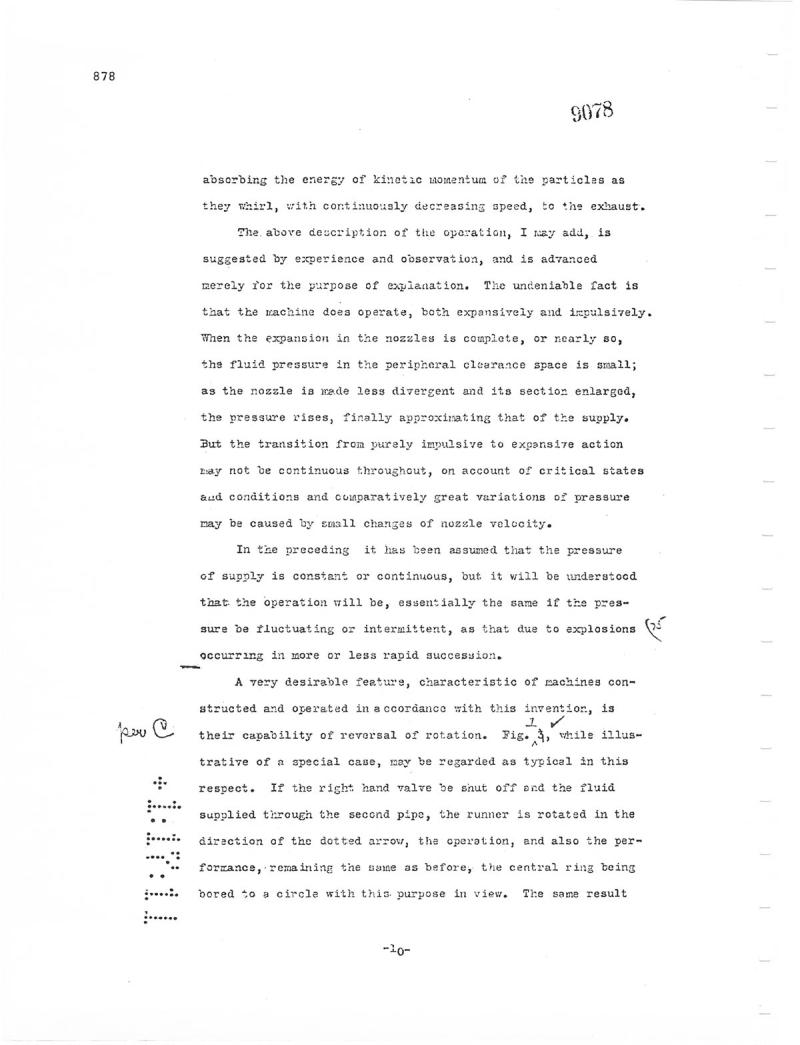
Nikola Tesla Patents
Nikola Tesla U.S. Patent 1,061,206 - Turbine Patent Wrapper Page 14
878 per C 9078 absorbing the energy of kinetic momentum of the particles as they whirl, with continuously decreasing speed, to the exhaust. The above description of the operation, I may add, is suggested by experience and observation, and is advanced merely for the purpose of explanation. The undeniable fact is that the machine does operate, both expansively and impulsively. When the expansion in the nozzles is complete, or nearly so, the fluid pressure in the peripheral clearance space is small; as the nozzle is made less divergent and its section enlarged, the pressure rises, finally approximating that of the supply. But the transition from purely impulsive to expansive action Lay not be continuous throughout, on account of critical states aud conditions and comparatively great variations of pressure may be caused by small changes of nozzle velocity. In the preceding it has been assumed that the pressure of supply is constant or continuous, but it will be understood that the operation will be, essentially the same if the pressure be fluctuating or intermittent, as that due to explosions occurring in more or less rapid succession. A very desirable feature, characteristic of machines constructed and operated in accordance with this invention, is 1✓ their capability of reversal of rotation. Fig. 3, while illustrative of a special case, may be regarded as typical in this respect. If the right hand valve be shut off and the fluid supplied through the second pipe, the runner is rotated in the direction of the dotted arrow, the operation, and also the performance, remaining the same as before, the central ring being bored to a circle with this purpose in view. The same result. -10
